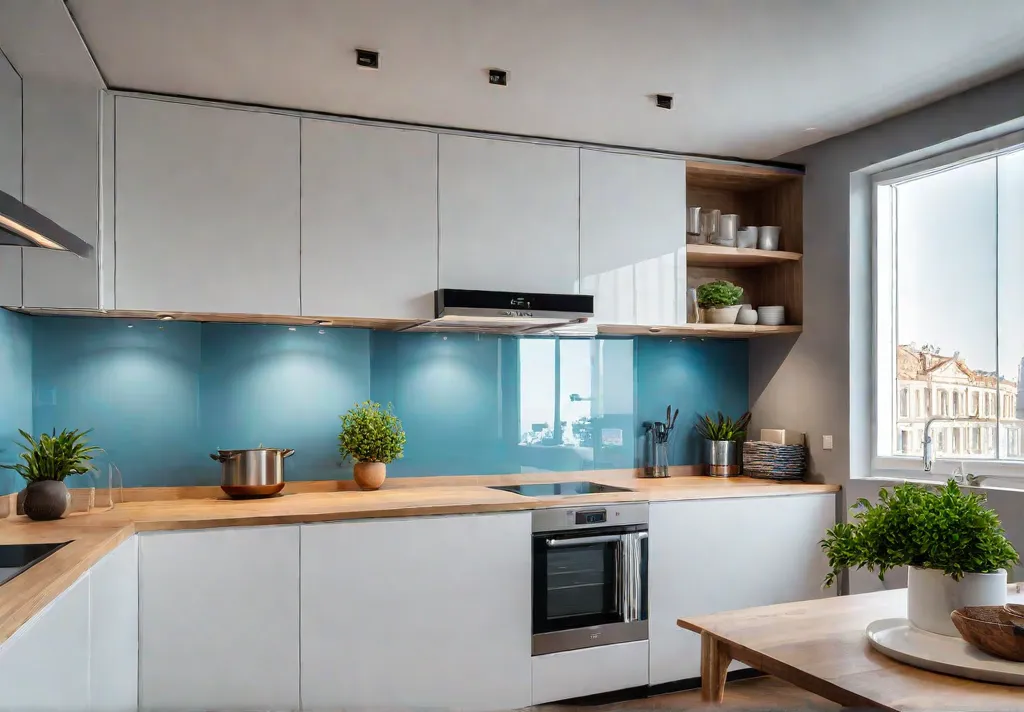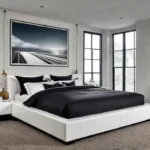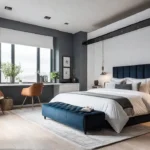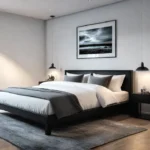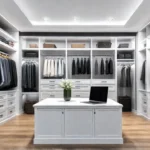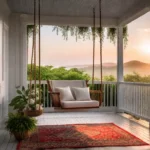Imagine stepping into a cozy, urban kitchen that feels calm despite its compact size. The secret? A well-executed color scheme that defies spatial constraints and creates an inviting, open ambiance. Whether you’re a city-dwelling minimalist or a suburban-style maven, mastering the art of color in a small kitchen can transform your culinary haven into a chic, airy retreat.
Lighten Up: The Power of Pale Hues
Light colors are your best friend when making a small kitchen feel more expansive. These airy hues magically reflect and bounce light around the room, creating a sense of openness and airiness that can make even the tiniest of spaces feel positively palatial.
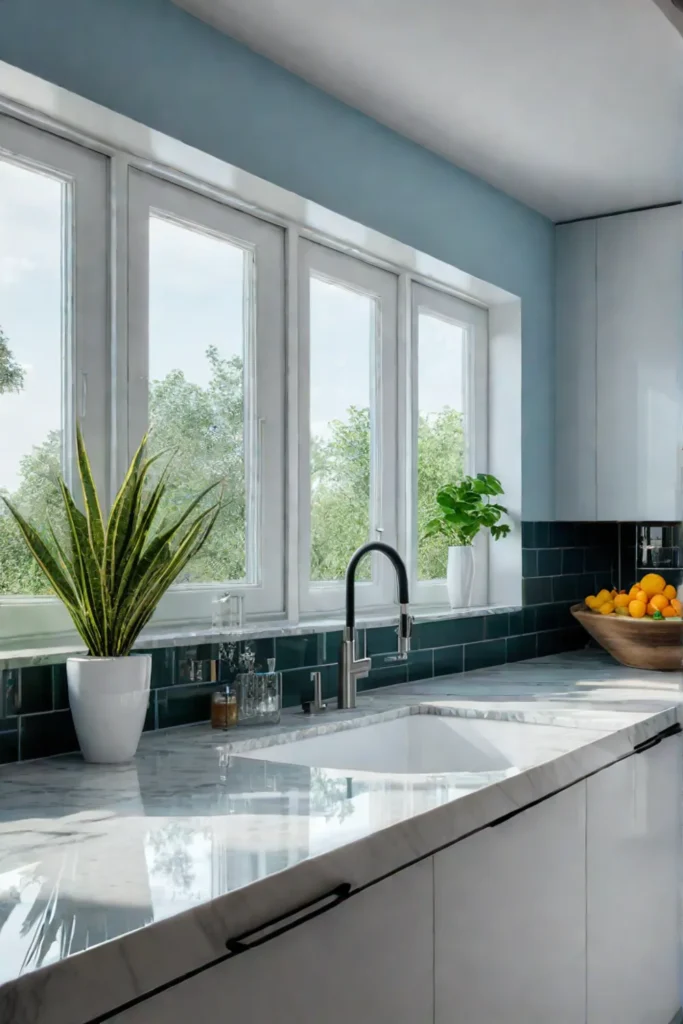
Soft whites, delicate grays, and soothing pastels like powder blue or mint green are all excellent choices for a light and bright color palette. These shades visually expand the space and have a calming, serene effect that can turn your kitchen into a tranquil sanctuary amidst the chaos of city living.
But don’t just take our word for it – science backs up the spacious power of light colors. Studies show that these hues can make a room feel up to 10% larger than it is. So, if you’re working with a cramped culinary corner, painting the walls and cabinets in a soft, airy tone can be a game-changer.
Consider incorporating light-colored countertops and backsplashes to enhance the illusion of space further. The reflective properties of materials like glossy white subway tiles or sleek quartz can bounce light around the room, creating an even brighter, more open feel.
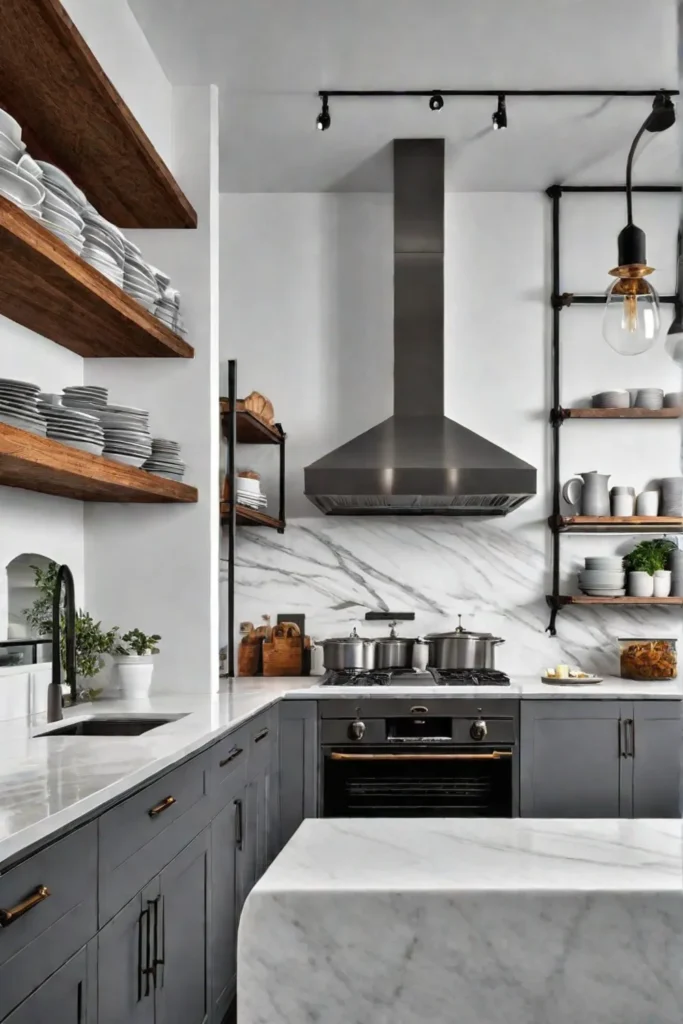
And don’t forget about those finishing touches! Incorporating reflective surfaces like stainless steel appliances or metallic accents can amplify the effect of your light color scheme, making your small kitchen feel positively palatial.
Monochrome Magic: The Art of Tonal Harmony
If you’re a true minimalist, a monochromatic color scheme might be the perfect fit for your small kitchen. By using various shades and tints of the same hue, you can create a cohesive, streamlined look that appears larger and exudes a sense of modern sophistication.
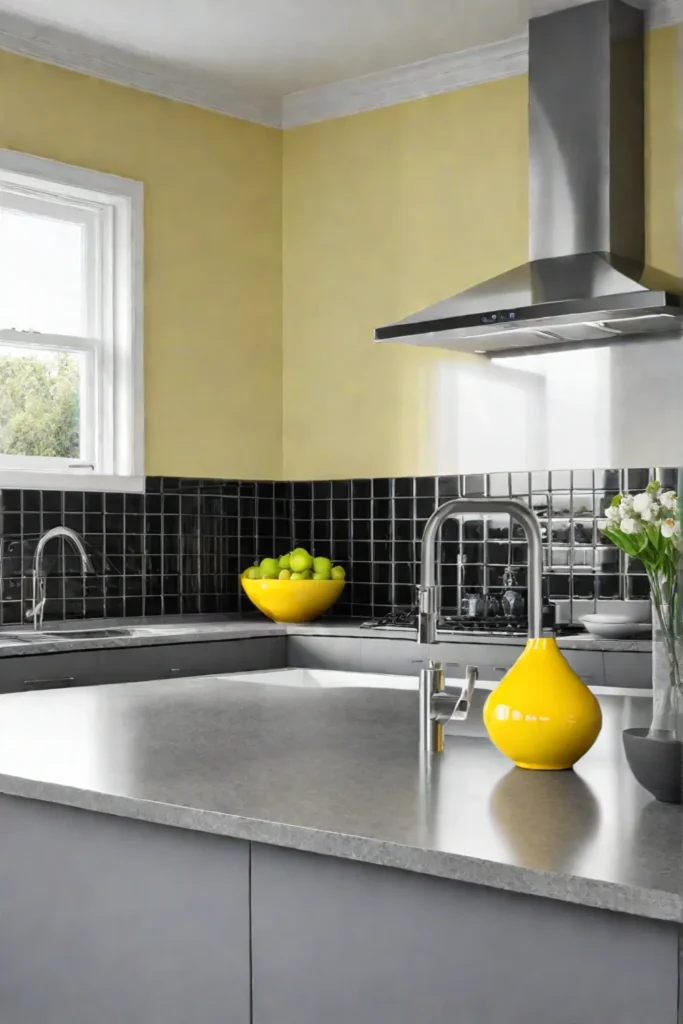
From an all-white kitchen radiating crisp, clean vibes to a rich, moody palette of deep blues or charcoal grays, monochromatic schemes offer endless possibilities for small-space style. And the best part? These tonal palettes can make a room appear up to 30% larger than it is—talk about a spatial illusion!
But don’t worry, a monochromatic kitchen must not be a bland, one-note affair. Subtle variations in tone and texture can add visual interest and depth to your space. Consider painting the walls, cabinets, and trim in different shades of the same color or incorporating various finishes like matte, glossy, or metallic to create a dynamic, layered look.
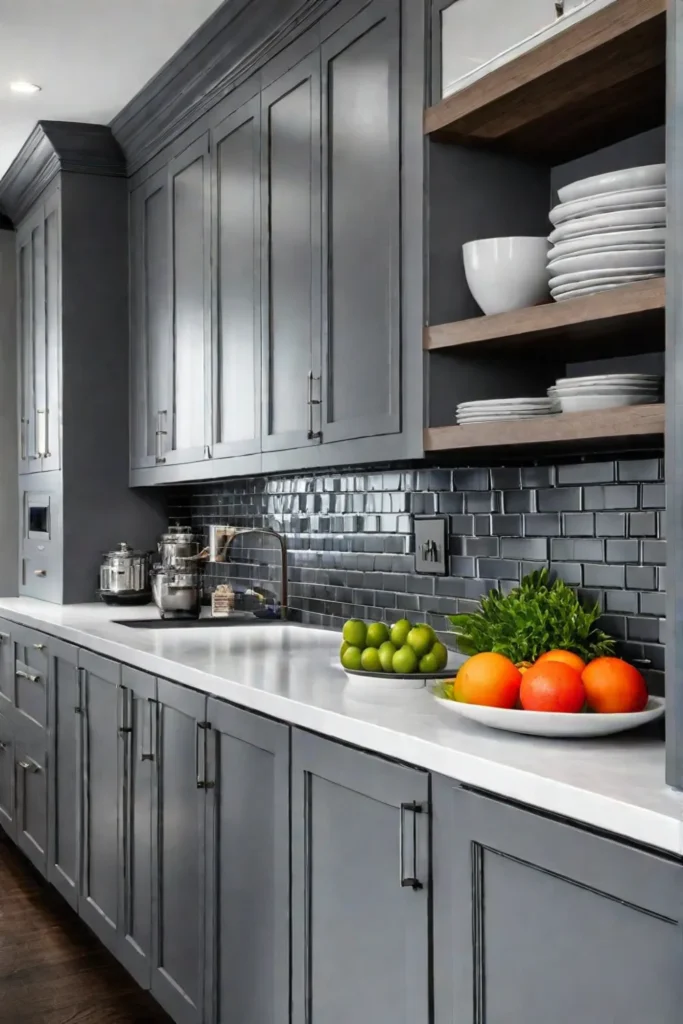
And let’s not forget about the power of mirrors and reflective surfaces! Strategically placing a few well-placed mirrors or incorporating glossy tile backsplashes can further enhance the illusion of space created by your monochromatic palette.
Bold and Beautiful: Accent Colors That Pop
While light colors and monochromatic palettes can create the illusion of space, incorporating bold, contrasting accents can also effectively add visual interest and personality to your small kitchen. After all, who says a compact culinary corner has to be boring?
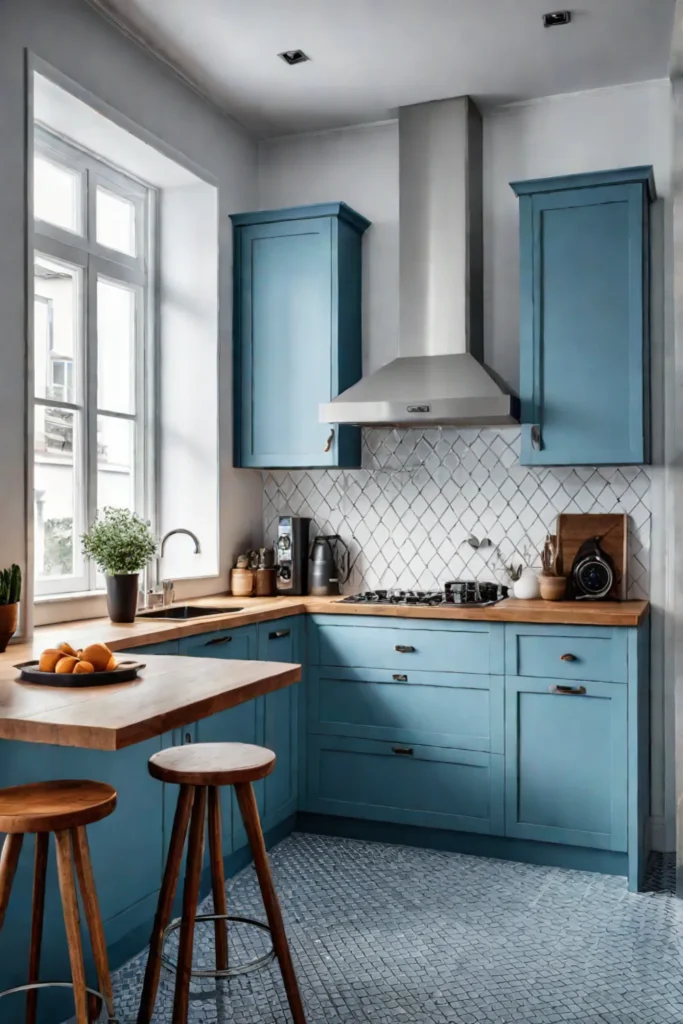
Vibrant tile backsplashes, colorful kitchen textiles, or statement lighting fixtures are all excellent ways to incorporate eye-catching pops of color into your space. These accents add visual intrigue and can also draw the eye upwards, creating the perception of a larger, more open area.
But don’t go overboard – balance is the key to using bold accents in a small kitchen. Pair your vibrant hues with a neutral, light-colored base to maintain a cohesive, spacious feel. Think of a crisp white backdrop with pops of rich emerald green or a soft gray palette accented by bursts of sunny yellow.
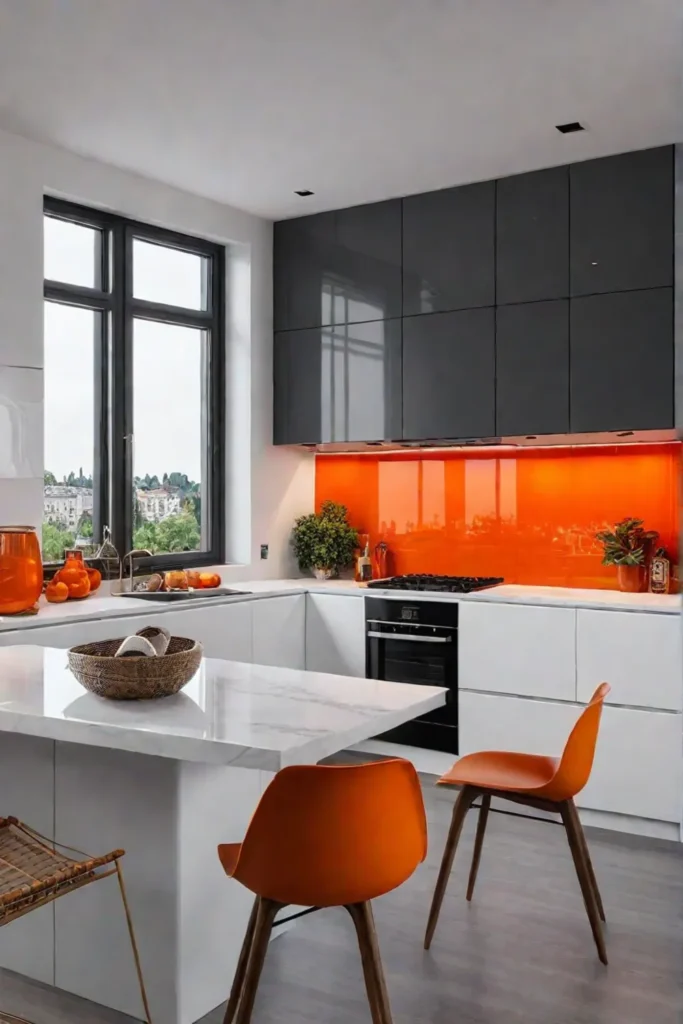
And here’s a fun fact: certain accent colors, like deep blues and rich greens, can also have a grounding, calming effect in the kitchen. So, you’re not only creating visual interest but also fostering a sense of tranquility in your culinary haven.
The Psychology of Color: Enhancing Mood and Function
Understanding the psychological impact of color can be a powerful tool in creating the illusion of space in your small kitchen. By leveraging the emotional and perceptual effects of different hues, you can enhance the overall feel and functionality of the space, transforming it into a true extension of your style and lifestyle.
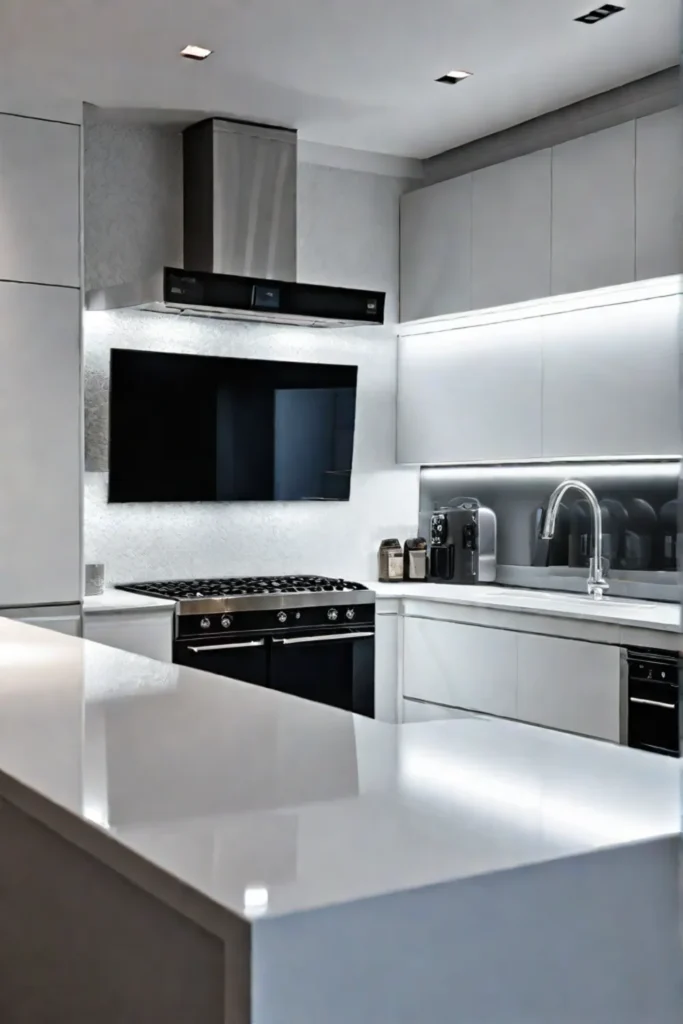
For example, cool colors like blues and greens create a sense of openness and airiness, making them ideal for creating a spacious vibe in a compact kitchen. Incorporating these calming hues into your cooking zone can foster a tranquil, focused environment perfect for culinary creativity.
On the other hand, warm colors like reds and yellows can add a sense of vibrancy and energy to a space. Consider using these energizing hues in accents or in the dining area of your kitchen to create a lively, inviting atmosphere perfect for entertaining.
And let’s not forget about the power of neutrals! Whites, grays, and beiges can create a sense of serenity and sophistication, making them ideal for creating a cohesive, calming foundation in your small kitchen.
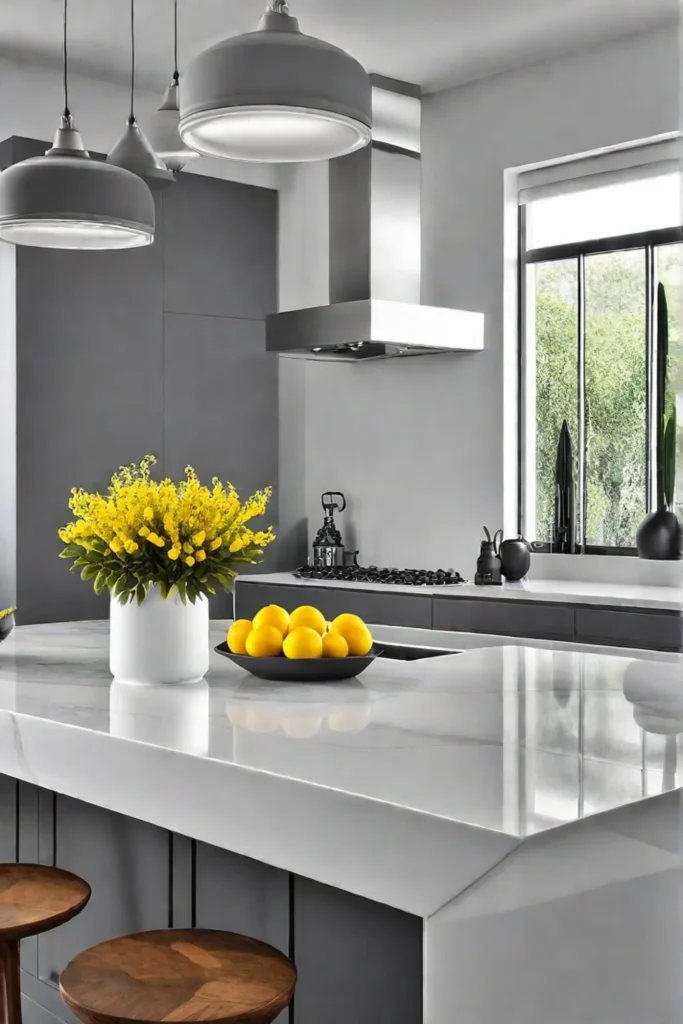
By strategically using color to enhance the functionality and mood of different zones within your kitchen, you can create a space that looks stunning and feels tailored to your unique needs and lifestyle.
Conclusion: Unleash Your Inner Color Guru
Ultimately, creating the illusion of space in a small kitchen is all about mastering the art of color. Whether you opt for light and airy hues, a monochromatic masterpiece, or bold, eye-catching accents, the right color scheme can transform your compact culinary corner into a chic, inviting oasis.
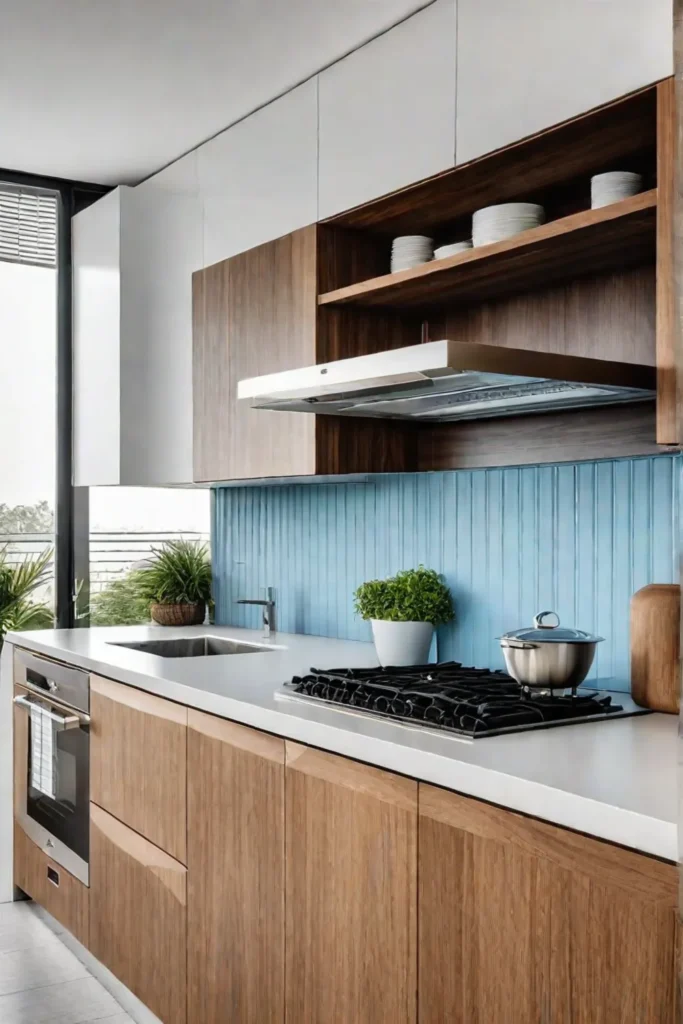
So, embrace your inner color guru, and don’t be afraid to experiment! With creativity and a lot of style, you can turn your small kitchen into a spacious, stylish haven that defies spatial constraints and reflects your unique personality. After all, good design knows no boundaries – even in the tiniest of spaces.
